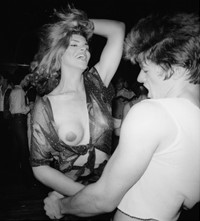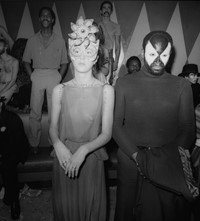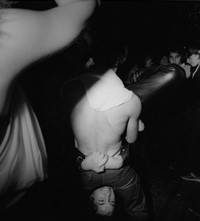Vince Aletti was the first person to write about New York’s fledgling disco scene – here, alongside a preview of his new book, he shares some memories of those disco nights
- TextMiss Rosen
In 1973, Vince Aletti was living in a two-room apartment in New York’s East Village that cost just $125 a month – a fee he could afford as a freelance music journalist for magazines like Rolling Stone and Crawdaddy. Aletti’s beat was covering black pop music like R&B, Motown, and Philly International. Then one night, a friend took him to The Loft, the private party hosted by DJ David Mancuso, where he got his first taste of disco – before the genre even had a name.
Aletti became the first person to write about the emerging disco scene, chronicling its rise from the underground to the top of the charts, introducing Black and Latinx gay culture to the world. In his weekly column for Record World magazine, Aletti showcased the latest breaking records, top ten playlists from DJs like Larry Levan, Walter Gibbons, and Nicky Siano, scoops and reviews
Aletti’s impressive archive is available to the public once more in The Disco Files 1973–78: New York’s Underground, Week by Week (D.A.P.). Here, Aletti shares some memories of those disco nights so long ago.
“David Mancuso’s Loft was a turning point for me. I don’t remember a club that had the same impact in terms of the music being played and the atmosphere of the crowd. It was like going to a house party once a week with balloons and a table with pretzels and punch. It was a very mixed crowd that was gay and straight, black and white, no distinctions.
I was hearing music I hadn’t heard anywhere else in a way I hadn’t heard anywhere else. The longer the song was, the more effective it was – as it could keep you caught up in the music. The breaks built disco; it was usually a peak on the dancefloor and my sense is that the whole evening was built around these l breaks as a way of extending the mood of the record and take it higher so that the dancefloor could explode. A great DJ can keep you in that flow, let it cool down and pick it up again.
The DJ was the creative force. Their ability to hear music and hear how things fit together was crucial to creating the overall disco sound. It wasn’t only the people who made the records – it was the people who played the records. I wrote my column with the DJs in mind. It was important for them to find records. It was something that they lived for: combing record stores and finding new things and finding a way to fit them in.
I was writing about almost everything that I got that had any value and it was really fun. There was so much great music. It wasn’t some hermetic little thing. It had grown into what felt like a real community and a part of the larger culture that could not be ignored. There was this sense that it was changing the culture in ways that were profound – gay culture was moving into the mainstream and was being loved and accepted. At its best, disco had message of acceptance, community, and understanding that had an effect on the people who went and danced. The music was taking us somewhere together and there was a message that could unite us.”
The Disco Files 1973–78: New York’s Underground, Week by Week (D.A.P.) is out today















